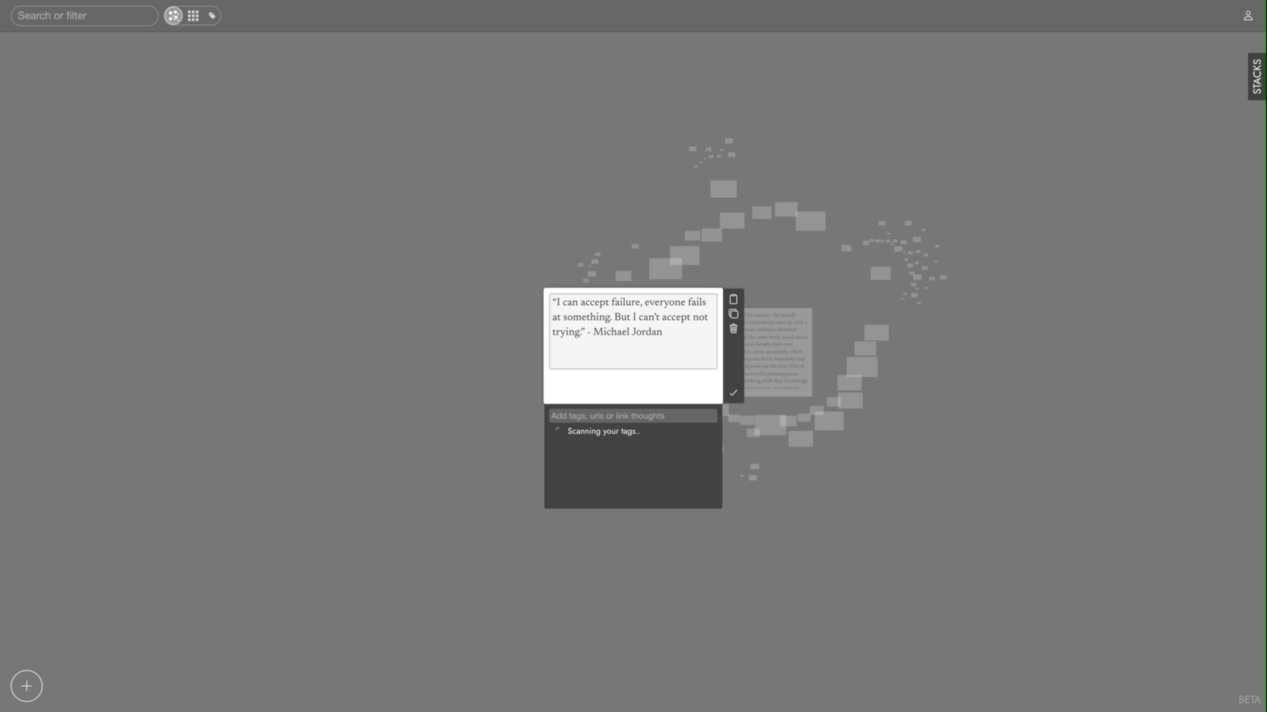This is the first of several articles I’ll be writing on how I use Napkin to collect, process, and work with ideas in my note-collection system. Foley Music and Arts readers will receive a $10 discount on Napkin’s monthly and yearly plans when signing up - just enter FOLEY on the promo code space when you get to the checkout page.
Go to a live news feed and read it for a few minutes, especially live feeds about US politics, COVID-19, or the Ukrainian War. Your heart rate will rise, along with your blood pressure. You'll start to feel anxiety and helplessness. The Merriam-Webster defines doomscrolling (also called doomsurfing) as:
…the tendency to continue to surf or scroll through bad news, even though that news is saddening, disheartening, or depressing. Many people are finding themselves reading continuously bad news about COVID-19 without the ability to stop or step back.
James Tapper writes in the Guardian about how the need to understand and make sense of current events can make the anxiety worse:
Mental health experts are warning that public engagement comes with a cost in terms of anxiety that should not be ignored. Paul Salkovskis, professor of clinical psychology at the University of Oxford, who worked on measures to help people deal with Covid-related anxiety, said: “Clearly there are some people who are already anxious, who will be significantly more anxious, as happened with Covid – we saw a big increase in some subtypes of anxiety in the clinic. There will be some of that with this situation, but I don’t think it’s going to be the dominant response.”
What if you could feel the opposite of the compulsive anxiety triggered by doomscrolling? What if you could discover a reverse reaction that lowers anxiety and blood pressure while scrolling through information that helps you to feel agency, surrender, and a rush of possibilities?
Over the last months I’ve been using Napkin, a tool for connected thought that’s currently in beta. From Napkin’s website:
Napkin is built for short notes. Napkin’s core is the dynamic interface. It reveals connected ideas without an explicit search, based on association instead of hierarchy.
The uncovering of associations between notes is something that I’ve found beneficial. Here's how to do it using Napkin..
1. Regularly collect a body of information such as book notes, article notes, highlights from journal entries or morning pages, and enter it into Napkin. I tend to collect a lot of information from various sources and put them in places for these ideas to lay idle and eventually become forgotten. These can be in notebooks, emails, note-taking apps, social media, and other places. The important first step is to centralize the body of information that is relevant to you so it an be reviewed regularly and utilized. You can also selectively import notes from apps such as Notion or Roam.
Once a note is created in Napkin, you can add tags and bidirectional links between notes through a process called Magic Labelling. There are plans to eventually automate Magic Labelling but I prefer to do it manually in order to have more control over the connections.
2. Retrieve notes from your system through tags, note connections, and at random in order to uncover connections between ideas. Serendipity is paramount.
Revisiting previous ideas in a traditional journal or Zettelkasten is a slow and laborious activity that requires significant focus. With Napkin, the review is built in - the algorithm does it for you and random retrieval is baked into the service. It's like crack cocaine for positive ideas, creating a dopamine rush through moments of understanding of how disparate things could fit together when they're thrown at you randomly.
Here’s a look at what the Napkin refers to as the swarm of thought - the expanse of your ideas collected in the system:
You can navigate through the swam via tags, bidirectional links, through search, or randomly (the “r” keyboard shortcut is my favorite). Previous notes, rather than being neatly catalogued in a folder structure, are quickly ready to be retrieved for reflection and putting together with other ideas.
Many people might just be fine stopping at step 2. Being able to understand and process what's going on in our life is a major accomplishment in itself and is by no means easy.
But there’s a third step…
3. The connections formed between ideas can lead to personal outpout or further exploration. Personal output could include articles, Twitter threads, videos, workshop ideas, or even books. Some of the connections might also yield no answers, but result in opportunities for next steps in your reading, learning, or research.
Far from arriving at concrete conclusions, the connections discovered from growthscrolling are much more open-ended, resulting in questions and possibilities rather than answers:
How could I use this?
What could this lead to?
How do these ideas fit together?
What if I tried this idea?
What if I was wrong about this?
Where can I find further information about this?
How can I break through my apparent bias on this?
All of these questions lead to growth and further avenues of inquiry.
Similar to doomscrolling, the growthscrolling process also requires a large amount of information to wade through and put together. You’re the one who will need to put the time into putting together a meaningful and growing body of notes. In return, you’ll be able to generate positivity, agency, and the lure of latent possibilities.
In the next few articles I’ll be looking at the process of assembling material, inputting it into Napkin, and going from random entries to stacks, and from there to the first draft of an article.
(Image courtesy of David Vig on Unsplash)



